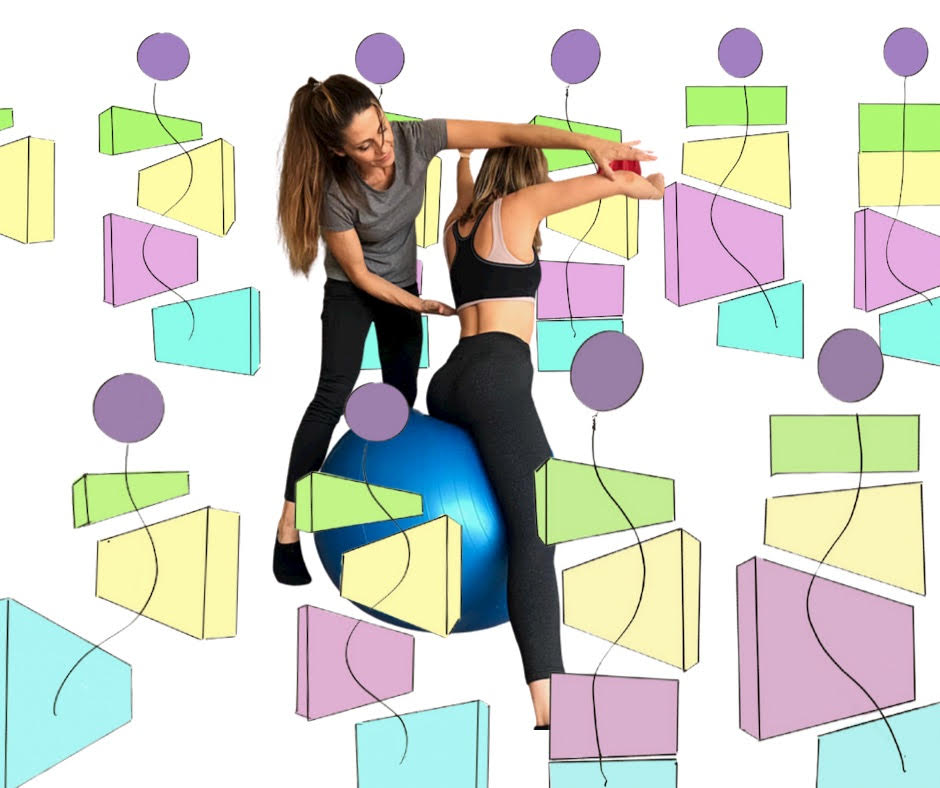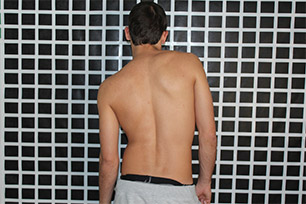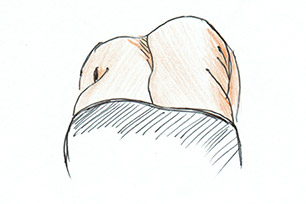
The most recent definition of scoliosis describes it as a Three- dimensional torsional deformity of the spine and trunk .It causes abnormal lateral curvatures of the spine,vertebral rotation and increase or decrease of the normal spinal curves(hyper kyphosis and flat back).
The cause for Idiopathic Scoliosis is still unknown. There are probably multiple factors leading to it. It can start or progress at any period of rapid growth. The progression is more common in girls than in boys and happens mainly during puberty.
If left untreated such scoliosis may lead to severe trunk deformities, which limit the functional biomechanics of the chest and decrease the lung capacity, exercise and general fitness and ability to work.
 |
Non-Surgical treatment of idiopathic scoliosis. Non-surgical treatment for scoliosis includes Physiotherapeutic Scoliosis-Specific Exercises (e.g., the Schroth method, SEAS, Lyon method), bracing, or a combination of both.
At our practice, we offer the Schroth Method for non-surgical scoliosis treatment. Our Schroth physiotherapist, Viktoria Kitanova, is certified in the method by the Asklepios Katharina Schroth Klinik in Germany.
Unfortunately Viktoria is currently unavailable for appointments.
During this time, Olivia Sagelangston, a qualified Biokineticist with a special interest in Scoliosis and Scheuermann’s Disease, will continue with Schroth exercises and corrective rehabilitation.
If needed, she will refer patients to Rado Kitanov for spinal manipulations and soft tissue treatment.
Please use the link below to book an appointment with her.
Book Now with Olivia Sagelangston
Thank you for your understanding!
Goals of the non-surgical treatment
The basic objectives of comprehensive conservative treatment of Idiopathic Scoliosis according to SOSORT are:
1. to stop curve progression at puberty (or possibly even reduce it)
2. to prevent or treat respiratory dysfunction,
3. to prevent or treat spinal pain syndromes
4. to improve aesthetics via postural correction
What is the Schroth Method
"Schroth" is a physiotherapeutic approach for the 3-dimensional treatment of scoliosis and other spinal deformities, such as Scheuermann's kyphosis and flat back syndrome. The method's effectiveness has been recognized by SOSORT, and it is the most researched and widely used form of Physiotherapeutic Scoliosis-Specific Exercises (PSSE) worldwide.
Each exercise in the Schroth method is unique to a specific pattern of scoliosis. The exercises involve active self-correction, rotational breathing, spinal mobilization techniques, and isometric contractions. The method was founded in the 1920s by Katharina Schroth, a German physiotherapist who herself had scoliosis. She developed a set of principles for correction that are applied to each exercise in the program. The goal is to help patients develop new postural awareness and integrate it into their daily activities, which is crucial to prevent the progression of the deformity.
The Schroth method is suitable for both patients who do not need a brace and those who use a brace as part of their treatment.

Expected results when using the Schroth Method
Treatment program
At our practice, we offer both individual and group treatment sessions. The individual program may consist of anywhere between 5 to 20 sessions, depending on how well the patient manages their exercises. A patient can join a group class only after completing 2 to 3 individual sessions.

Our patients receive training in the correct performance of the exercises and are given a home program that they need to follow. We conduct check-ups every 6 to 12 months, which do not require an X-ray unless there's evidence of progression in the deformity.
After the initial training, patients need to attend a few treatment sessions once a year to maintain and further improve their corrections.
For our overseas patients and those from other provinces within South Africa, we provide an intensive program customized to meet your needs.

How to Recognise Scoliosis
1.Parents should look for trunk asymmetry in their child's posture.

2.Adam’s test

Ask your child to band forward and look for a rib hump.
3.Back pain.
Children are very unlikely to experience back pain. In most of the cases a complain of a back pain is associated with scoliosis.
What to do next
Should any of these signs are present we strongly advise you to bring your child for a proper assessment. In case we diagnose a structural scoliosis you will be referred for a full spine X-Ray in order to create an accurate treatment plan.
In case there is no structural scoliosis there will be no need of an X-Ray. You will be given advice how to manage the postural asymmetry and a home program of exercises.
What not to do:
People with scoliosis should avoid the following or similar positions and exercises:



Home
About us
Services
Physiotherapy
Conditions treated
Non-Surgical Treatment of Scoliosis
Contact us
Disclaimer
Terms and Conditions (pdf, 118Kb)
PAIA manual - Kitanova (pdf, 291Kb)
PAIA manual - Kitanov (pdf, 281Kb)
© Copyright, Greenside Physiotherapy, Disclaimer, Design and Development Milcheff.com
The logos and trademarks used on this site are the property of their respective owners.

